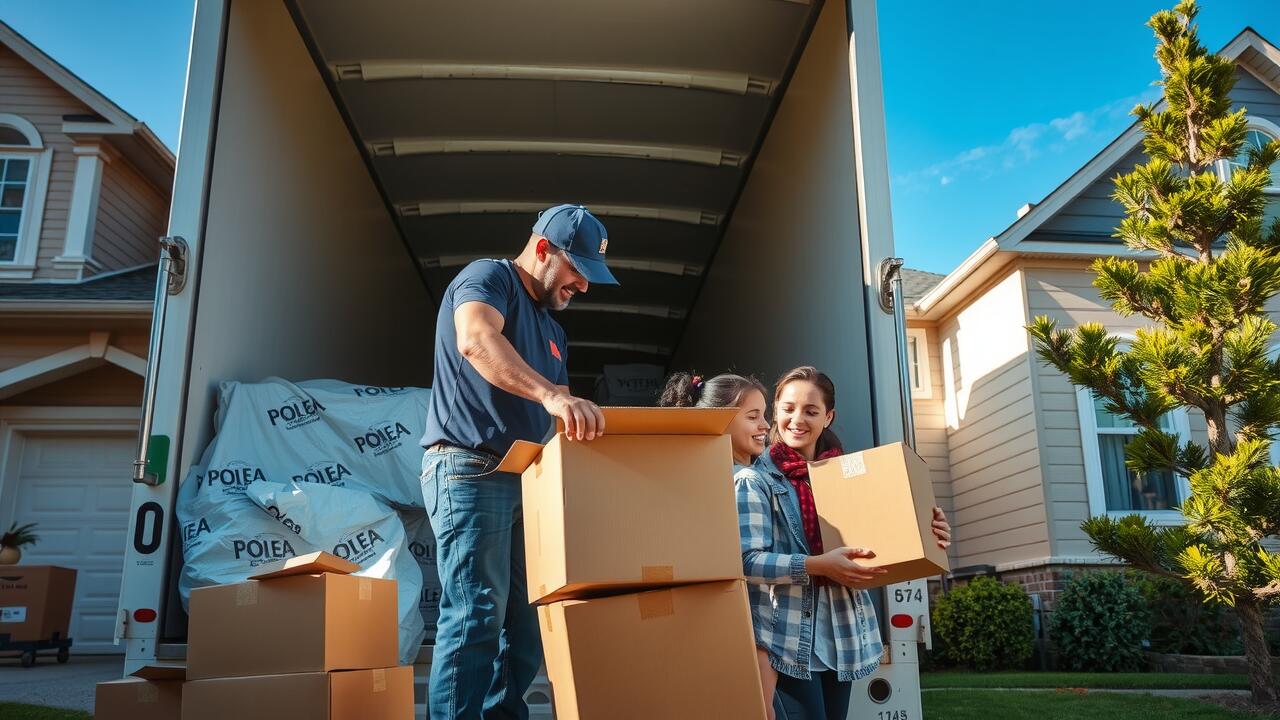
Table Of Contents
Labeling Boxes for Easier Unpacking
Effective labeling of boxes can significantly ease the stress of unpacking during long-distance moves. By clearly marking each box with its contents and the room it belongs to, you streamline the entire process. Use a bold marker for legibility and consider color-coding boxes for different rooms. This simple technique allows you to locate essential items quickly, reducing frustration once you reach your new home.
When preparing for long-distance moving in Melrose Park, Illinois, it is also beneficial to include special instructions on the boxes if needed. For example, fragile items should be labeled as such, and boxes containing items required immediately can be marked for priority unpacking. This added level of detail helps prioritize your needs and ensures that everything arrives at your new location organized and ready to use.
Effective Labeling Techniques You Should Use
Labeling boxes may seem like a simple task, but it plays a crucial role in the unpacking process after a long-distance move. Consider using a color-coded system, where each color corresponds to a room in your new home. For example, use blue for the kitchen, green for the living room, and red for the bedroom. This method allows you to spot where the boxes should go simply by looking at the colors. Additionally, write detailed descriptions on each box, including the main items inside. This will save time searching for specific items when you arrive at your new place.
For those executing long-distance moving in Melrose Park, Illinois, using waterproof and smudge-proof markers can greatly enhance your labeling system. Choose durable labels that can withstand handling and varying weather conditions. If you prefer a more visual approach, consider printing out labels with clear symbols or images representing the contents of each box. When you arrive at your destination, these effective methods can streamline the unpacking process, helping you settle in without unnecessary delays or confusion.
Packing Clothing and Linens
When preparing for a significant move, packing clothing and linens requires strategic thinking. Begin by sorting items into categories. Donate or discard anything that no longer serves you. Folding items neatly can save space within your boxes. Using suitcases and duffel bags allows for easy transport while keeping clothing wrinkle-free. Vacuum-sealed bags can also compress bulky items, making them easier to manage during a long-distance move.
Utilizing garment bags is ideal for delicate clothing that needs extra protection. Additionally, consider packing linens in the same boxes as coordinating items to simplify unpacking later. Labeling each box with specific contents can reduce confusion once you arrive at your new home. This approach proves particularly effective during long distance moving in Melrose Park, Illinois, where organizing efficiently ensures a smoother transition into your new space.
Creative Ways to Pack Fabrics Efficiently
When preparing for a long-distance move, packing clothing and linens efficiently can make a significant difference in your overall experience. Consider using vacuum-sealed bags to maximize space and protect your fabrics from moisture and odors during transit. This method allows you to condense bulky items like comforters and winter coats, leaving more room for other essentials. Roll your clothes instead of folding them to save space and reduce wrinkles, which makes unpacking smoother.
Another clever strategy involves utilizing your luggage and suitcases for packing. These bags are designed for mobility and can securely hold various fabrics. Fill your suitcases with clothing, towels, and bedding while avoiding unnecessary boxes. This approach not only keeps your items organized but also makes your long-distance moving journey from Melrose Park, Illinois, much easier. By combining these packing techniques, you can ensure that your fabrics remain protected and manageable throughout the move.
Protecting Large Furniture Pieces
When it comes to protecting large furniture pieces during a long-distance move, proper preparation is key. Begin by disassembling furniture when possible; this makes transport easier and reduces the risk of damage. Keep track of screws and small parts by placing them in labeled bags and taping them securely to the pieces they belong to. Using moving blankets or padded covers provides an extra layer of protection. Make sure to secure these blankets with tape or straps to prevent them from shifting during transit.
Additionally, wrapping furniture in stretch wrap or plastic sheeting can safeguard against scratches and dust. For more delicate items, like glass tabletops, use cardboard or bubble wrap for extra cushioning. This is especially important for long-distance moving in Melrose Park, Illinois, where varying weather conditions could expose your furniture to moisture or temperature changes. Prioritize transporting these items upright, as this helps maintain their structural integrity during the move.
How to Disassemble and Wrap Your Furniture Safely
Disassembling large furniture pieces is essential for streamlined transport during a move. Begin by removing any detachable parts such as legs, shelves, or cushions. Use a screwdriver and other necessary tools to carefully take apart your furniture. Keeping hardware like screws and bolts in a labeled bag will ensure nothing gets lost during the process. Documenting each step with photos can also be helpful for reassembly later.
Proper wrapping of disassembled furniture protects it from damage during transit. Use moving blankets or bubble wrap to cover surfaces, especially edges and corners that are more prone to scratches. Secure the wrapping with tape to keep it in place. For items with glass components, make sure to use extra padding to avoid breakage. When planning your relocation, consider professional moving services that specialize in Long Distance Moving Melrose Park, Illinois, to help with the heavy lifting and packing complexities.
FAQS
What are some effective labeling techniques for moving boxes?
Effective labeling techniques include using clear, bold markers to write on the boxes, color-coding them by room, and creating a master inventory list to track the contents of each box.
How should I pack my clothing and linens for a long-distance move?
You can pack clothing and linens efficiently by using vacuum-sealed bags to save space, rolling clothes instead of folding them to minimize wrinkles, and packing items in dresser drawers to maximize space in the moving truck.
What is the best way to protect large furniture pieces during a move?
The best way to protect large furniture pieces is to disassemble them if possible, wrap them in moving blankets or bubble wrap, and secure them with straps in the moving vehicle to prevent shifting.
Can I pack fragile items with my furniture?
It is not recommended to pack fragile items with your furniture, as they may get damaged. Instead, pack fragile items separately in sturdy boxes with plenty of cushioning materials, and clearly label those boxes as fragile.
Should I hire professional movers or handle the packing myself for a long-distance move?
Whether to hire professional movers or handle the packing yourself depends on your budget, time constraints, and comfort level with packing. Professional movers can save time and provide expertise, while packing yourself may be more cost-effective if you can manage it.


